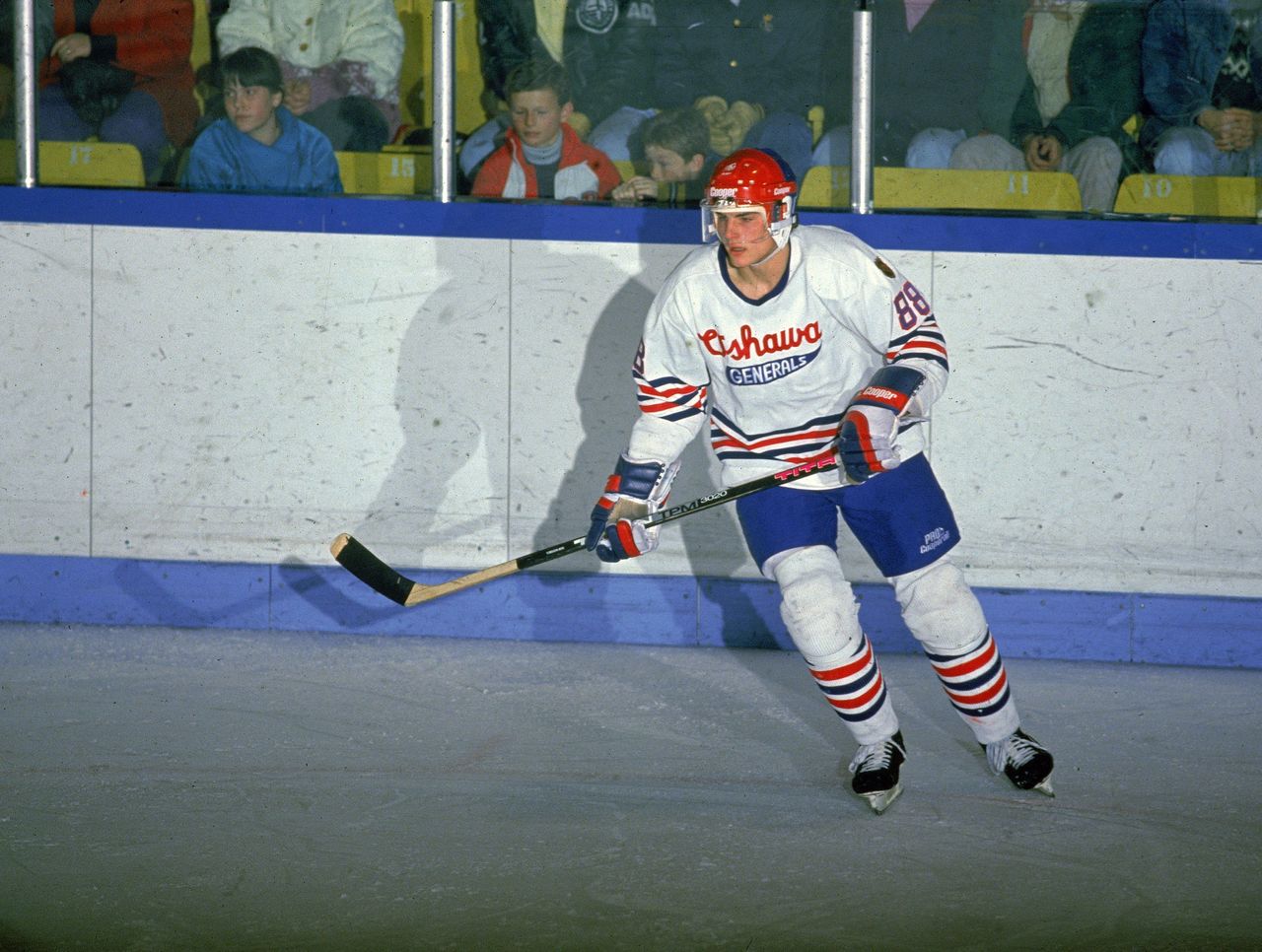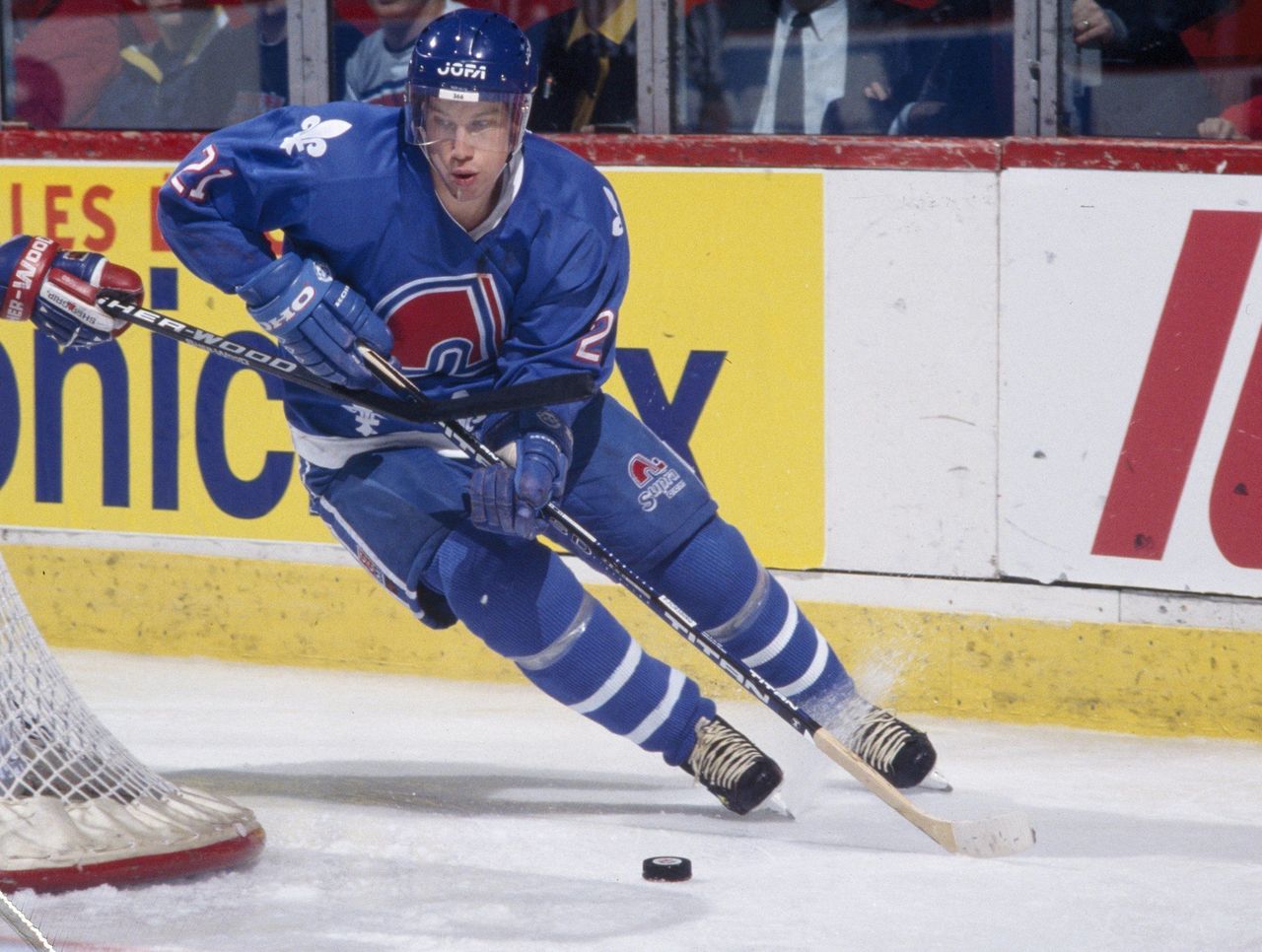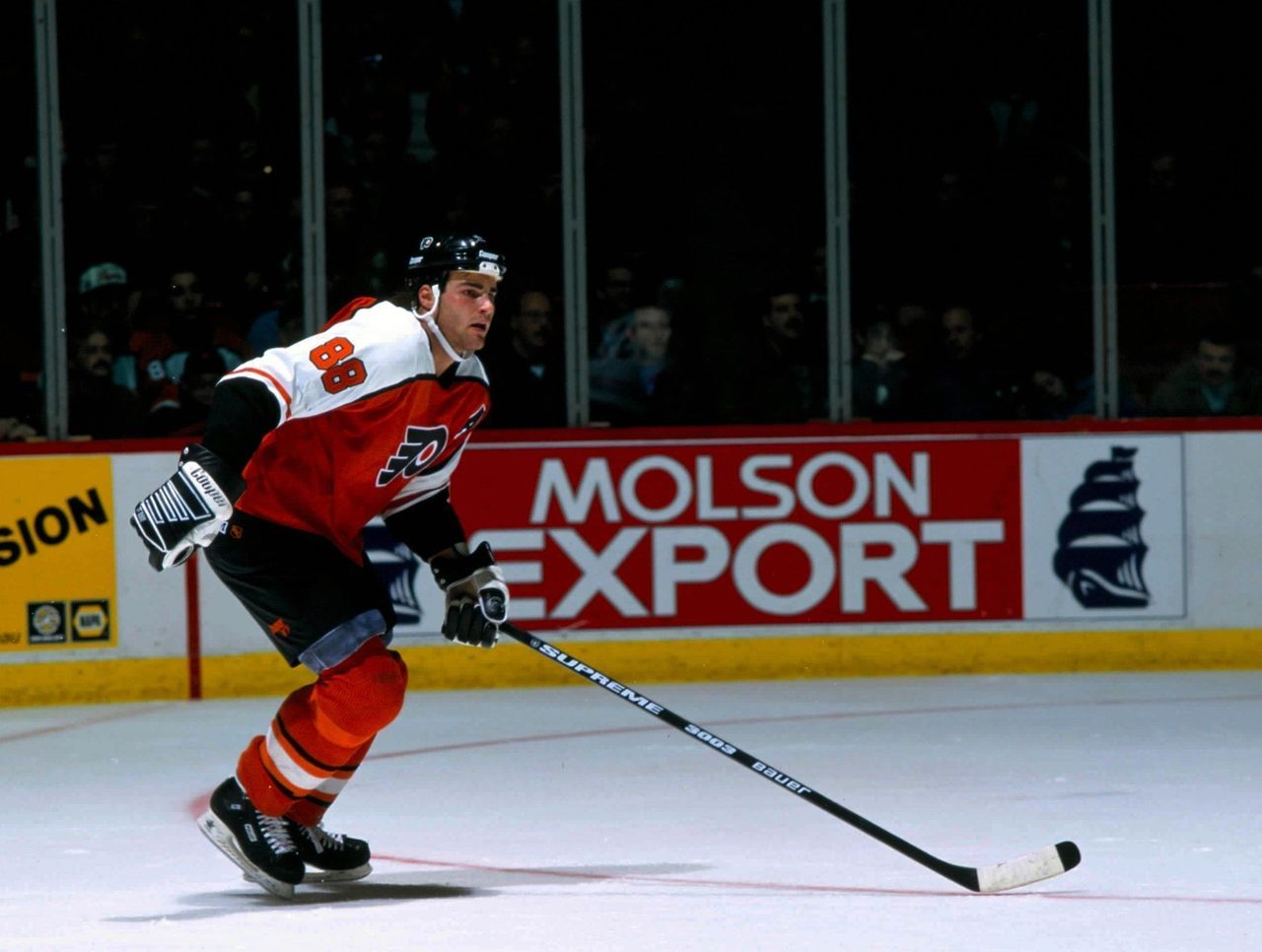1992-93 Revisited: The trade that changed the NHL forever
James Bisson celebrates the 25th anniversary of the 1992-93 season with a look back at the most memorable moments of the greatest campaign in NHL history. This edition deals with the Eric Lindros saga, which ended with the No. 1 overall pick being involved in one of the biggest - and most controversial - trades in professional sports:
To get a sense of just how much of an impact the Eric Lindros controversy had on the NHL, imagine if any of these things happened in today's sports fan environment:
- A 6-foot-4, 230-pound cement shed of a hockey player dominates major junior hockey, recording 149 points and 189 penalty minutes in 57 regular-season games and adding 38 points in 16 playoff games;
- He becomes the consensus No. 1 pick in the 1991 draft, but refuses to report to the team that selects him and waits out a trade;
- He lands a spot on his country's entry at the 1991 Canada Cup - joining Wayne Gretzky, Mark Messier, and other Hall of Famers - despite being just 18 years old and having played zero games at the NHL level;
- He winds up being the centerpiece of not one, but two, blockbuster deals - a development that results in the NHL enlisting the help of an outside arbitrator to determine which trade will be accepted.
Any of these four developments might have broken social media had it been around at the time, so imagine navigating through the memes, GIFs, and hot takes that would've emerged from all four having happened.
You could hardly blame teams for falling over themselves to try and land Lindros, who was considered a transcendent talent the league hadn't seen since Mario Lemieux. And unlike Le Magnifique, Lindros welcomed the opportunity to steamroll any opponent in his path.

As a 17-year-old, the London, Ontario, native scored 71 goals and added 78 assists in 57 games for the Oshawa Generals; he finished 21 points ahead of the next-closest scorer and still managed to finish fifth in the OHL in penalty minutes. He added 17 points in just seven games as part of Canada's gold medal-winning entry at the World Junior Hockey Championships.
No player had ever combined slick stickhandling, a lightning-quick release, a pillowy-soft passing touch, and brutal physicality the way Lindros did. And so, when it came time for the Quebec Nordiques to make the first pick in the 1991 entry draft, they did as expected:
Lindros said all the right things, but when it came time to wear the Quebec sweater, he declined - just as he said he would prior to the draft. Lindros said he wanted to explore all of his options, but the Nordiques were steadfast, refusing to deal the pick in the days prior to the draft. So, Lindros went with Plan B - returning to the Generals before joining the Canadian national team.
Lindros had 31 points in just 13 games with Oshawa the following season, thriving despite risking potential long-term injury - a development that would not only limit his earning potential, but would devalue him on the trade market. With both sides digging in, every hockey fan had an opinion on what the Nordiques should do, including legendary ranter Don Cherry:
Finally, in late June 1992, Quebec moved forward on a deal for the disgruntled star. But in a stunning twist, Nordiques ownership group managing partner Marcel Aubut agreed in principle to two separate deals, with the New York Rangers and Philadelphia Flyers. NHL rules prohibit a player from being traded to two different teams (duh), and the league suddenly had a problem.
The NHL enlisted the help of labor lawyer Larry Bertuzzi, who had previously worked with the league on contract negotiations. Bertuzzi told the Globe and Mail's Eric Duhatschek in a 2016 interview how then-NHL vice president Jim Gregory presented the case to him:
They told me, ‘Here’s the deal: We have these clubs and they have a dispute and we’d like you to resolve it.' I said, ‘Fine, give me all the written material on the arbitration process and the trade rules.’ They said, ‘Well, it’s pretty simple.’ There were two lines under the bylaws that said, ‘If there’s a dispute involving a trade, the matter shall be resolved by the president, or, if not the president, by an arbitrator.’ And when I asked them to tell me the rules on a trade, they said, ‘Well, we don’t have any.'
Bertuzzi accepted the challenge, and spent 10 days with representatives from the three teams to come up with a solution. The end result: Bertuzzi concluded that the Nordiques and Flyers had reached an agreement prior to Quebec and New York hammering out a deal, and green-lit the first trade.

And what a deal it was: In exchange for Lindros, the Nordiques acquired the rights to future Hall of Fame forward Peter Forsberg, star netminder Ron Hextall, four other players, a pair of first-round draft picks, and a whopping $15 million. The first-round pick Quebec kept became goaltender Jocelyn Thibault, who carved out a 14-year NHL career.
The trade altered both teams' fortunes for years. The Nordiques became a powerhouse - though, in a cruel twist of fate, fans in Quebec didn't get to enjoy the peak years. The franchise moved to Colorado in 1995 and would go on to win Stanley Cup titles in 1996 and 2001, with Forsberg playing a significant role on both teams.

Lindros, meanwhile, carved out his own Hall of Fame career. He recorded 75 points in 61 games as a rookie in 1992-93, finishing fourth in the Calder Trophy voting. He was even better during the lockout-shortened 1994-95 campaign, finishing with a league high-tying 70 points in 46 games en route to the Hart Trophy as league MVP.
Lindros was one of the city's most beloved athletes during his time in Philadelphia, amassing 659 points in 486 games and a berth in the 1997 Stanley Cup final; he led all playoff scorers with 26 points but ultimately fell short of the title. A contract dispute led to him being dealt - ironically - to the Rangers, where he had 158 points over parts of three seasons.
Concussions and other assorted injuries limited Lindros to just 82 more games after that - 33 with the Toronto Maple Leafs in 2005-06, and 49 with the Dallas Stars in his final NHL season. Lindros was inducted into the Hockey Hall of Fame in 2016, making good on the immense promise he flashed as the most dominant power forward of his generation.
With a quarter-century now elapsed since the end of the Lindros soap opera, it's fair to say that most parties involved made out for the best. The Flyers acquired one of the top players in the world and reached the Stanley Cup, while the Nordiques-turned-Avalanche used the trade return to win two titles. And the Rangers? They didn't need him, ending their Cup drought in 1994.
Other entries in the series:
- Pat LaFontaine piles up the points
- Pat LaFontaine recalls his greatest NHL season
- A Wales of an All-Star rout
- Manon Rheaume suits up for the Tampa Bay Lightning
- Chris Kontos recalls his historic night in Lightning opener
- Mario Lemieux's most magnificent season
- The Toronto Maple Leafs' roller-coaster season
- The Leafs' season as remembered by Doug Gilmour - Part I
- Teemu Selanne's sensational rookie season
- Sad-sack San Jose Sharks set NHL futility record
- The Leafs' season as remembered by Doug Gilmour - Part II
- Rocket scientist Juneau was no ordinary Joe
- 20 other cool things that happened that season
- An oral history of the Cup-winning Montreal Canadiens
(Photos courtesy: Getty Images)